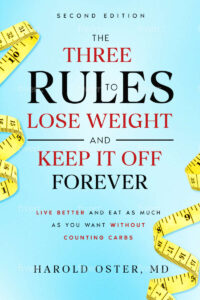Check Your Blood Pressure at Home

Should you check your blood pressure at home?
The simple answer for most people is “yes.” Hypertension is a leading cause of heart disease, kidney disease, and stroke. In the United States, the chance of developing hypertension is nearly 50%. Prehypertension, defined as a systolic blood pressure of 120-139 or a diastolic blood pressure between 80 and 89 is a risk factor for heart disease and puts you at high risk of developing hypertension.
The biggest reason for checking your blood pressure at home is that you don’t see the doctor often. See why it is hard to get an appointment. You may go in for a physical every year or two. What is your blood pressure in between these visits? When I was in practice, it was common for a young person to have a high blood pressure in the office. They downplayed it saying that they always had a high blood pressure in the office. When I asked if they ever checked it outside the office they answered no. Then maybe it was always high. They had no idea.
You may think it’s crazy to check your blood pressure at home, yet we measure so many things. Millions of people have smartwatches that measure heart rate, oxygen levels, steps walked, and sleep patterns. I believe that for most people, the blood pressure level is more important than anything a smartwatch can do.
Many people know about white coat hypertension. This refers to an elevated blood pressure in the office but normal blood pressure outside the office. This is quite common and can only be diagnosed by checking blood pressure at home. White coat hypertension can lead to overtreatment with blood pressure medications. Serious complications can occur, especially low blood pressure, which can cause fainting and even a stroke.
Another problem is when people who don’t see the doctor often go to the dentist or an emergency room for an illness. In either instance it is common to have an elevated blood pressure, from pain or anxiety. I have reasonably good blood pressure at the doctor’s office, but when I needed oral surgery a few months ago, my blood pressure was elevated. I checked my blood pressure at home for a few weeks. It was not as controlled as I liked, and I have made some changes to improve it.
Not checking blood pressure at home can lead to masked hypertension. This is when your blood pressure is normal or nearly normal in the doctor’s office, and it is high most of the other times. It can be caused by variable blood pressure readings throughout the day. If you only see the doctor occasionally, it could be just random luck. Also, some people eat carefully for the few days before the doctor’s visit leading to a better blood pressure on the day of the physical. I saw many times when the initial reading by a medical assistant is normal and the blood pressure when I take it is high. This can be caused by white coat hypertension, but it can also be due to an erroneous blood pressure check by the assistant. The best way to prove it one way or the other is to check your blood pressure at home.
I recommend an automated digital machine and prefer one where the cuff goes on the upper arm. I have an Omron machine, but the major brands are likely all accurate enough. If you get a high reading, I recommend seeing your physician. Repeat it a few times to make sure the readings are real, but if you have any concerns, contact a physician. None of what I say here applies if your physician has other recommendations for you. I am speaking in generalities.
How often you check your blood pressure is a question for your physician. I check mine most days, at different times. Most people don’t need to check it that often, but again, talk to your doctor. I will soon be scheduling a routine physical exam. I will bring a spreadsheet of my blood pressure readings. Then, if my blood pressure is elevated at the visit, I can show them my readings outside the office. The only way to know is to check my blood pressure at home.
 The Second Edition of The Three Rules to Lose Weight and Keep It Off Forever is
The Second Edition of The Three Rules to Lose Weight and Keep It Off Forever is